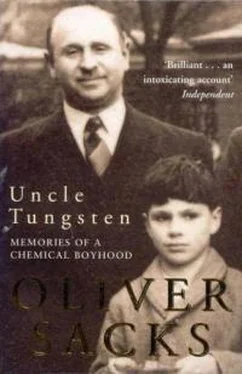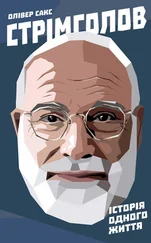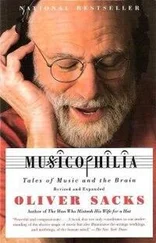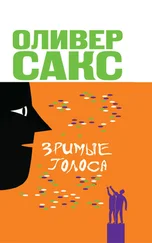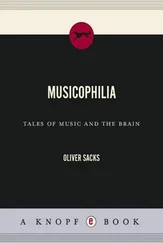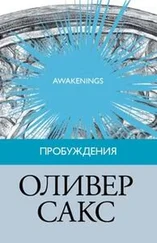I soon spread from this to other forms of toning. Selenium toning gave a rich reddish color, and palladium- and platinum-toned prints had a fine, sober quality, more delicate, it seemed to me, than the usual silver prints. One had to start with a silver image, of course, because only silver salts were sensitive to light, but then one could replace it with almost any other metal. One could easily replace the silver with copper, uranium, or vanadium. A particularly wild combination was to combine a vanadium salt with an iron salt such as ferric oxalate, and then the yellow of the vanadium ferrocyanide and the blue of the ferri-ferrocyanide would combine to form a brilliant green. I enjoyed disconcerting my parents with pictures of green sunsets, green faces, and fire engines or double-decker buses turned green. My photographic manual also described toning with tin, cobalt, nickel, lead, cadmium, tellurium, and molybdenum – but I had to stop myself at this point, for I was becoming obsessed, going overboard with toning, with the possibility of pressing all the metals I knew into use in the darkroom, and forgetting what photography was really for. This sort of too-muchness had no doubt been noticed at school, for it was around this time that I received a school report that said, ‘Sacks will go far, if he does not go too far.’
* * *
There was an oddly massive, chunky camera in Walter’s collection – this, he said, was a color camera: it had two half-silvered mirrors in it, dividing the incoming light into three beams, and these were directed through differently colored filters to three separate plates. Walter’s color camera was a direct descendant of a famous experiment done at the Royal Institution by Clerk Maxwell in 1861, photographing a colored bow with ordinary black-and-white plates through filters of the three primary colors – red, green, and violet – and projecting the black-and-white positives of these images using three lanterns with corresponding filters. When they were all perfectly superimposed, the three black-and-white pictures exploded into full color. With this, Maxwell showed that every color visible to the human eye could be constructed from just these three ‘primary’ colors, because the eye itself had three equivalently ‘tuned’ color receptors, rather than an infinity of color receptors for every conceivable hue and wavelength.
While Walter once demonstrated this to me with three lanterns, I was eager to have this miracle, this sudden explosion of color, more immediately to hand. The most exciting way of getting instant color was by a process called Finlaycolor, in which, in effect, three color-separation negatives were taken simultaneously by using a grid ruled with microscopic red, green, and violet lines. One then made a positive, a lantern slide, from this negative, and brought it into exact alignment with the grid. This was tricky, delicate, but when one had them in perfect register, the previously black-and-white slide would burst into full color. Since the screen, with its microscopic lines, simply appeared grey, one saw, when it was juxtaposed with the slide, the most magical, unexpected creation of color, where seemingly there had been none before. (The National Geographic originally used Finlaycolor, and one could see the fine lines on these if one looked with a magnifying glass.)
To make color prints, one had to print three positive images in the complementary colors – cyan, magenta, and yellow – and then superimpose them. Though there was a film, Kodachrome, that did this automatically, I preferred to do it in the old, delectable way, making separate cyan, magenta, and yellow diapositives from my separation negatives and then floating them gently, one above the other, until I had them in exact superposition. With this, suddenly, marvelously, the colors of the original burst out, having been coded, as it were, in the three monochromes.
I fiddled with these color separations endlessly, seeing the effect of juxtaposing two rather than three colors, or viewing the slides through the wrong filters. These experiments were at once amusing and instructive; they allowed me to create a range of strange color distortions, but above all they taught me to admire the elegance and economy with which the eye and brain worked, and which one could simulate remarkably well with a photographic three-color process.
* * *
We also had at the house hundreds of stereoscopic ‘views’ – many on cardboard rectangles, others on glass plates – paired, faded sepia photos of Alpine scenery, the Eiffel Tower, Munich in the 1870 s(my mother’s mother was born in Gunzenhausen, a little village some miles from Munich), Victorian beach and street scenes, and industrial scenes of various sorts (one particularly arresting view was of a Victorian factory, with long treadles driven by steam engines, and it was this image that came to my mind when I read about Coketown in Hard Times ). I loved feeding these double photographs into the big stereoscope in the drawing room – a massive wooden instrument that stood on its own stand and had brass knobs for focusing and altering the separation of the lenses. Such stereoscopes were still quite common, though no longer as universal as they had been at the turn of the century. Seeing the flat, dim photographs suddenly acquire a new dimension, a real and intensely visible depth, gave them a special reality, a verisimilitude of a peculiar and private sort. There was a romantic, secret quality to the stereo views, for one was privy to a sort of frozen theater when one looked through the eyepieces – a theater entirely one’s own. I felt I could almost enter into them, like the dioramas in the museum.
There was, in these views, a small but crucial difference of parallax or perspective between the two pictures, and it was this which created the sense of depth. One had no sense of what each eye saw separately, for the two views coalesced, magically, to form a single coherent view.
The fact that depth was a construction, a ‘fiction’ of the brain, meant that one could have deceptions, illusions, tricks of various sorts. I never had a stereo camera myself, but would take two pictures in succession, moving the camera a couple of inches between exposures. If one moved the camera more than this, the parallactic differences were exaggerated, and the two pictures, when fused, gave an exaggerated sense of depth. I made a hyper-stereoscope, using a cardboard tube with mirrors set obliquely inside it, increasing the interocular distance, in effect, to two feet or more. This was marvelous for bringing out the different depths of distant buildings or hills, but yielded bizarre effects at close distances – a Pinocchio effect, for example, when one looked at people’s faces, for their noses seemed to be sticking out inches in front of them.
It was also intriguing to reverse the pictures. One could easily do this with stereo photographs, but one could also do it by making a pseudoscope, with a short cardboard tube and mirrors, so that the apparent position of the eyes was reversed. This caused distant objects to look closer than nearby ones – a face, for instance, might look like a concave mask. But it produced an interesting rivalry or contradiction, for one’s knowledge, and every other visual cue, might be saying one thing, and the pseudoscopic images saying another, and one would see first one thing then another, as the brain alternated between different perceptual hypotheses. [29]
* * *
The other side to all of this, I came to realize – a sort of deconstruction or decomposition – could occur when I had migraines, in which there were often strange visual alterations. My sense of color might be briefly lost or altered; objects might look flat, like cutouts; or instead of seeing movement normally, I might see a series of flickering stills, as when Walter ran his film projector too slow. I might lose half of my visual field, with objects missing to one side, or faces bisected. I was terrified when I first got attacks like this – they started when I was four or five, before the war – but when I told my mother about them, she said she had similar attacks, and that they did no harm and lasted only a few minutes. With this, I started to look forward to my occasional attacks, wondering what might happen in the next one (no two were quite the same), what the brain, in its ingenuity, might be up to. Migraines and photography, between them, may have helped to tilt me in the direction in which, years later, I would go.
Читать дальше
